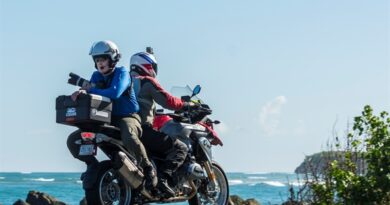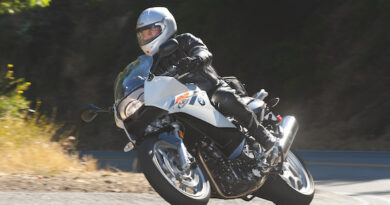A sublime loop around the southwestern states
Photos by Jason Spafford
Wheeling up to the U.S. border at Tecate was more of a “Triple Whopper with fries” drive-thru experience than the usual cacophony of queues and chaos surrounding the more southern Fronteras. The two-year familiarity of my old, comforting Latin American life was about to leave me for a convenient and First World one. A U.S. Immigration official greeted us formally at the barrier into the States. Plenty of instructional “Pleases” and “Thank you’s” but few of the warm pleasantries to which I’d become accustomed. Upon enquiring where we might find the Mexican Aduana to relinquish our temporary motorcycle permits, the U.S. officer looked at me square on and in a reassuring tone remarked, “Don’t worry ma’am, you’re safe now.”
 Having experienced months of color and contrast, unharmed and far from intimidated through the length and breadth of Mexico—right from the southernmost tip of Argentina in fact—it was curious to fathom the context behind such a statement.
Having experienced months of color and contrast, unharmed and far from intimidated through the length and breadth of Mexico—right from the southernmost tip of Argentina in fact—it was curious to fathom the context behind such a statement.
Still, we went onto savor a short but sweet taste of California. And wonderfully, the hospitality of a family whose social circle comprised a couple of medicinal marijuana drug dealers, a female windsurfing Olympic gold medalist, and a well-traveled Frenchman. It exploded the ordinary order of things and showed me the endless possibilities through an eclectic mix of people who had been there all along. We departed, grateful to our Californian hosts who had warmly facilitated our assimilation back into First World living.
 Ahead of us lay yellowish-brown, open country, studded with cacti. Arizona was the first place I’d been to in a while that turned out to look exactly as I’d pictured it. As we rode along a ribbon of rocky desert, slanting sunlight gleamed off an endless pile of white, fluffy clouds extending as far as the eye could see. I was charmed by the ingredients of the ride.
Ahead of us lay yellowish-brown, open country, studded with cacti. Arizona was the first place I’d been to in a while that turned out to look exactly as I’d pictured it. As we rode along a ribbon of rocky desert, slanting sunlight gleamed off an endless pile of white, fluffy clouds extending as far as the eye could see. I was charmed by the ingredients of the ride.
Without hesitation, I became immersed in the local offerings, including plopping ourselves in the stony Sonoran Desert not far from Gold Nugget Road, just outside of Quartzsite. A magnet for rock hounds and a mecca for the RV boondocking capital of the world. Leaving the snowbirds to it, we parked our bikes and bottoms a respectful distance away to watch the sun commence its colorful descent in glorious seclusion. It was a gem of La Paz County, all right.
 An interesting opening presented itself en route. One that took us to a vast, mile-wide hole in the middle of the northern Arizona desert. Meteor Crater is worth an impromptu visit, particularly if you can find the free off-road trails leading right up to the huge cavity. A couple of tumbledown shacks—rustic throughout—added to the casual backcountry exploration.
An interesting opening presented itself en route. One that took us to a vast, mile-wide hole in the middle of the northern Arizona desert. Meteor Crater is worth an impromptu visit, particularly if you can find the free off-road trails leading right up to the huge cavity. A couple of tumbledown shacks—rustic throughout—added to the casual backcountry exploration.
 Beckoning us like a bear to honey, our two-wheel jaunt on a circuitous loop of the southwest naturally compelled us to the vista-fantastic state that is Colorado. Amid forests of aspen drenched in leaves the color of sulfur, we soon ascended into Highway 550’s chillier climes. My first glimpse of a snowscape in a while; the cold burrowed through me like a worm as we shivered our way toward Silverton.
Beckoning us like a bear to honey, our two-wheel jaunt on a circuitous loop of the southwest naturally compelled us to the vista-fantastic state that is Colorado. Amid forests of aspen drenched in leaves the color of sulfur, we soon ascended into Highway 550’s chillier climes. My first glimpse of a snowscape in a while; the cold burrowed through me like a worm as we shivered our way toward Silverton.
Taken unawares, I’d not been so ill-prepared in a long time, having carelessly left the cold-weather riding gear back in Arizona. A hard white chill gripped me, it ate at my bones. My breath made a spool-shaped flicker of steam on the visor below a deceptive sun, which shone anemically through a thin gruel of cloud cover. Light snow began to fall, meandering flakes that seemed little more than the air itself but soon coalescing into hard grey pellets.
 The best I could do was pull over, shuddering uncontrollably while blowing into cupped hands and heating them on Pearl’s engine, courtesy of my F 650 GS. The vast wilderness swathed in tree-clad mountains, scenic byways and high snow-capped peaks along the Million Dollar Highway was a sight to behold. I wasn’t about to let something as trivial as the icy temperatures stop me from enjoying myself. A rare day of unpopulated beauty. Just look where you are, Lisa!
The best I could do was pull over, shuddering uncontrollably while blowing into cupped hands and heating them on Pearl’s engine, courtesy of my F 650 GS. The vast wilderness swathed in tree-clad mountains, scenic byways and high snow-capped peaks along the Million Dollar Highway was a sight to behold. I wasn’t about to let something as trivial as the icy temperatures stop me from enjoying myself. A rare day of unpopulated beauty. Just look where you are, Lisa!
Climbing above 11,000 feet the following day, somewhat more acclimatized, we re-entered the glittering scene of tall pines laced in thick snow, sparkling in the sun. Monarch Pass in the Rocky Mountains was a bag of early festive fun I hadn’t expected in October. Whichever way I looked, mountain peaks wore fluffy white sashes around their middles, and evergreens cloaked themselves in a heavy coat of snow. Life slows down in colder climes and more often than not, that’s exactly what the soul needs. A winter wonderland that can take your breath away. It did mine.
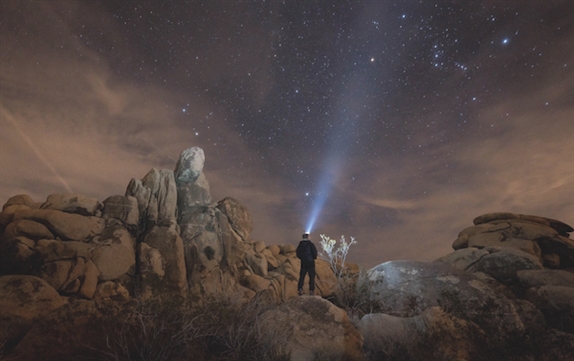 Highway 70 took us at full tilt for 360 miles from Denver to Moab, the start of our ride back. It seemed sacrilege not to take advantage of Utah’s sweet spots. Hiking up to the red rock wonders of Delicate Arch in Eastern Utah, just one of 2,000 natural sandstone arches, my heart was pounding at the top of the climb among the shadowy, giant world of rock.
Highway 70 took us at full tilt for 360 miles from Denver to Moab, the start of our ride back. It seemed sacrilege not to take advantage of Utah’s sweet spots. Hiking up to the red rock wonders of Delicate Arch in Eastern Utah, just one of 2,000 natural sandstone arches, my heart was pounding at the top of the climb among the shadowy, giant world of rock.
Arches National Park sits a mere four miles north of Moab, giving us ample opportunity to get our fill of balanced rocks, fins, and pinnacles set in a striking environment. The colors were brilliant, mostly of radiant reds, russet and ochre against unblemished blue skies. In some areas, faulting had exposed millions of years of geological history. It was extraordinary.
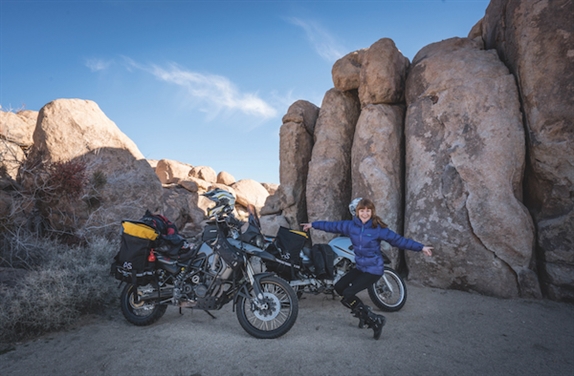 Once my heart returned to a normal resting rate, I stared into it all in meditative tranquillity. Oh, look! A rock squirrel, disturbed by a handful of folks near its habitat, scurried silently into the middle distance. With the grace of its kind, another cupped its body to brake on the air, dropped onto the bark of a tree, and vanished.
Once my heart returned to a normal resting rate, I stared into it all in meditative tranquillity. Oh, look! A rock squirrel, disturbed by a handful of folks near its habitat, scurried silently into the middle distance. With the grace of its kind, another cupped its body to brake on the air, dropped onto the bark of a tree, and vanished.
More mesmerizing landscapes carved from sedimentary sandstone took us to Canyonlands in Southeastern Utah, where interesting landforms and textures piqued my interest. The park preserves a spectrum of color within countless canyons, mesas, and buttes, broken up by the Colorado River and its confluence of tributaries. I sat in a vast basin bordered by sheer cliffs, where one of the jaw-on-the-floor vantage points can be viewed at Dead Horse Point. It felt as though I was riding through the pages of National Geographic, another piece of a dream come true.
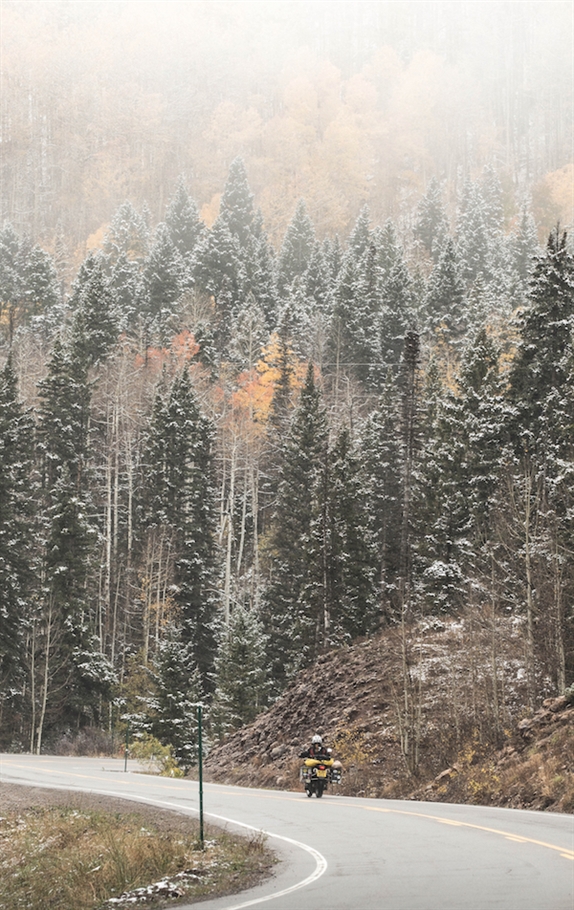 Indian petroglyphs, natural stone arches and the spectacular vistas of Canyonlands opened up at virtually every corner, especially when teetering on the edge of a cliff at 2,000 feet. Better known as the Shafer Trail, we took in some of the 18 miles of dirt; it’s one of those roads that will humble the biggest of egos.
Indian petroglyphs, natural stone arches and the spectacular vistas of Canyonlands opened up at virtually every corner, especially when teetering on the edge of a cliff at 2,000 feet. Better known as the Shafer Trail, we took in some of the 18 miles of dirt; it’s one of those roads that will humble the biggest of egos.
Although the afternoon was calm, I shielded myself from the winds stirred up by the canyon’s vastness. The sun was on its way down. It threw a hammered, golden light onto the cliff faces, which tumbled into a sea of purple darkness. I danced ecstatically at the top of the trail, emitting surprised little groans. I caught hold of the camera and swung it up toward a vivid pink gash of cloud. At that hour, the area was empty. The late afternoon light, brilliant but without warmth, washed our faces. “Amazing,” I mouthed unhurriedly.
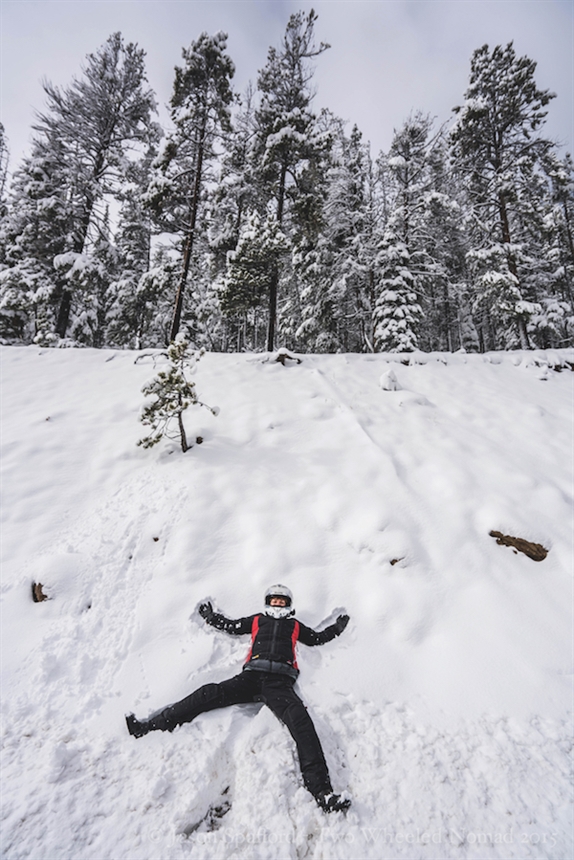 Straddling the border of Northeastern Arizona and Southeastern Utah, sits yet another incredible cluster of the Colorado Plateau’s towering sandstone buttes, mesas, and spires: Monument Valley Navajo Tribal Park—perfect for those hungry to devour more red-sand desert. The natural architecture is impossibly pleasing, steeply sloped, and despite its iconic beauty inspiring the location for countless movies, it remains a preservation site for the Navajo way of life, part of an Indian Reservation. Like most of our visual encounters in the southern national parks, few places elsewhere have made such an impact. The changing sunset sky gave way to a night that was blacker than black, lit exquisitely by Jupiter looking down on Venus as I shared the view.
Straddling the border of Northeastern Arizona and Southeastern Utah, sits yet another incredible cluster of the Colorado Plateau’s towering sandstone buttes, mesas, and spires: Monument Valley Navajo Tribal Park—perfect for those hungry to devour more red-sand desert. The natural architecture is impossibly pleasing, steeply sloped, and despite its iconic beauty inspiring the location for countless movies, it remains a preservation site for the Navajo way of life, part of an Indian Reservation. Like most of our visual encounters in the southern national parks, few places elsewhere have made such an impact. The changing sunset sky gave way to a night that was blacker than black, lit exquisitely by Jupiter looking down on Venus as I shared the view.
An overnight pit stop in Joshua Tree National Park concluded the loop of the southern states, which saw us ensconced in an ecological melting pot. Lined by a jumble of stacked boulders and walls of imposing granite, the convergence of two great deserts, the Mojave and Colorado, blend together in a barbed landscape adorned in flora and fauna. Such marvels of the desert simply keep going about their business, adapting to the relentless sun, little water and temperatures from below freezing to well above 100°F. As a non-desert dweller, I pondered how the park’s hardy residents conserve enough moisture and beat the heat. However they seek sustenance to ensure their survival, my soul gets nourished in such faraway places.
Sometimes I wonder if it’s a biological need or a DNA flaw that compels us to seek the excitement that comes in a place unfamiliar. I never know if a place will pull, prickle, tickle or tease, challenge or enlighten me. But I must say, the southwestern states are doing quite a job already, all of it binding me to the boundless joy and warmth in this life.
British-born, Lisa Morris and Jason Spafford are self-confessed thrill-seekers. Lisa helps to keep the wheels rolling by telling their tales in publications worldwide. As well, field-testing outdoor/motorcycle product complements the brand ambassadorships and paid partnerships. As an advocate for female riders, she consults with manufacturers of women’s motorcycle gear, too. Not the most natural off-road rider, Lisa is living proof that if you get your ticket, you can jump in the saddle and go. Near or far, Jason loves all things adventure travel, ultimately amid the wild places left in the world. Harboring an infatuation for chasing light in big open spaces comes the pursuit of photography, a lifelong addiction. Jason’s globally published portfolio is layered in adventure, landscape, wildlife, commercial and underwater photography. He’s also a skilled drone pilot and a videographer. If nothing else, traveling has made the pair wonder if there’s enough lifetime left. Join them: TwoWheeledNomad.com, Facebook/Instagram @TwoWheeledNomad and JasonSpaffordPhotography.com.

